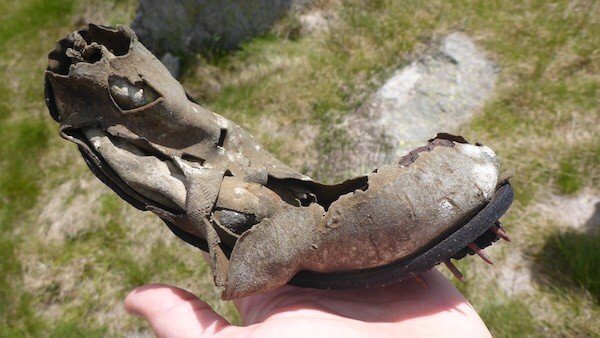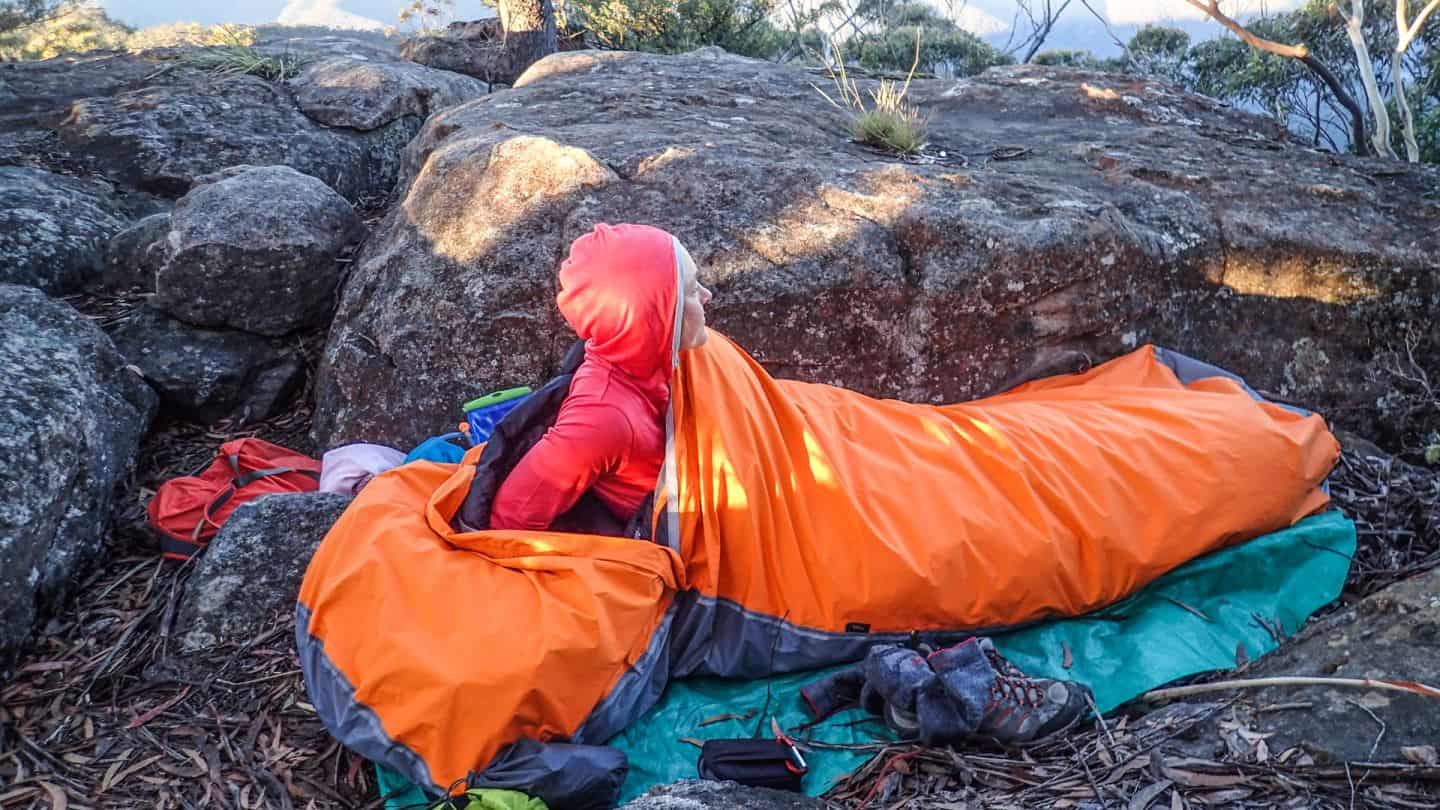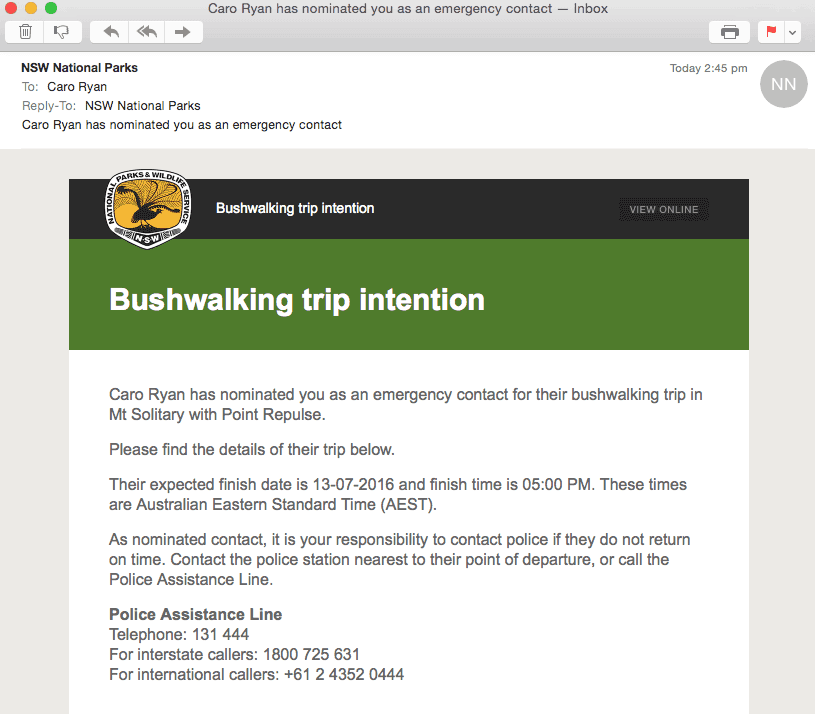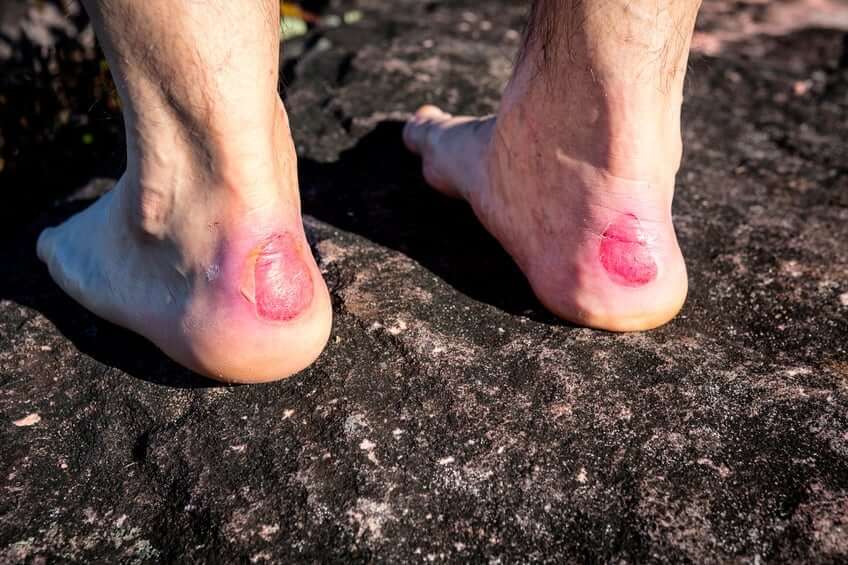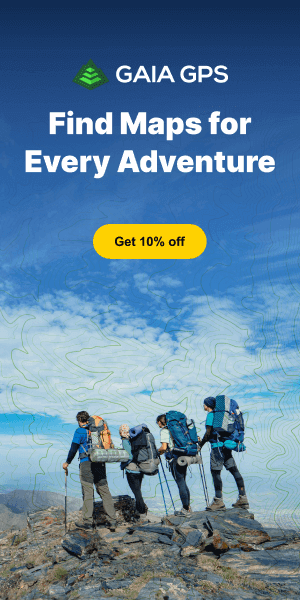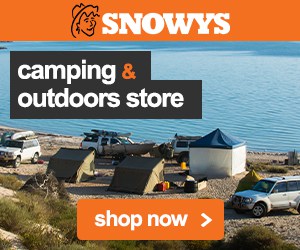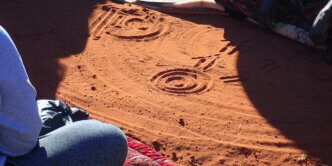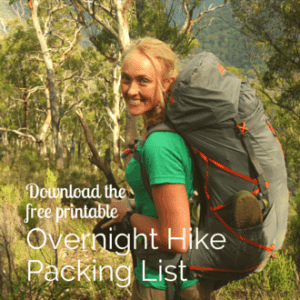Wouldn’t it be easy if one type of hiking shoe truly fit not only all feet, but all needs, terrain, quirks and conditions. Alas, with so many different types of outdoor adventure, there seems to be that many choices in footwear. So how can you be sure that you’re choosing the best hiking shoes for you?
It’s the type of discussion that can cause near riots on forums. As the simple old-fashioned shoe fanciers (those of the Dunlop Volley or KT26 persuasion – average price $40-ish AUD) come head to head with years of R&D and technical know-how that goes into the much more expensive offerings from outdoor retailers and their boots and shoes, $150-$400+AUD.
The simple answer is that there isn’t one shoe that fits all and so when it comes to choosing hiking shoes for yourself, it’s important that you know the facts on what your options are AND have the answers to some simple questions.
There’s lots of good online resources available which go into loads of detail in relation to materials, fabrics and construction, however as with everything within the LotsaFreshAir universe, I try to keep things simple. Just what you need to know to put you in the right direction.
Without going into the minutiae of sub-sections, there’s 5 main types of things you can put on the end of your legs for when you go hiking. The obvious difference being the amount of ankle support, stability and protection that they offer.
- Basic - Like granny used to wear - eg: Dunlop Volleys / KT26 - Price: $30-45 AUD
- Cross Trainers - You can wear em walking, you can wear em milking a cow… matter of fact… I’m wearin’ em now. Price: $130-$250 AUD
- Hiking Shoes - All the good bits about a hiking boot… without the weight or ankle protection! Price: $110 - $220 AUD
- Trail Runners - What happens when a hiking shoe and a cross trainer make babies. Price: $90 - $200 AUD.
- Hiking Boots - What we all ‘thought’ was the only option for bushwalking, but ain’t. Price: $150-$400 AUD
- What about waterproof hiking shoes and boots?
- A word about weight and materials
- A word about breaking in
- A word about toe parties...
Basic – Like granny used to wear – eg: Dunlop Volleys / KT26 – Price: $30-45 AUD
These classics are loved by canyoners and roofers for their legendary gripability and flexibility in their rubber sole. This combined with their canvas upper and 1970’s Bjorn Borg tennis player styling, means that water drains away well and their sole ‘hugs’ rocks and uneven surfaces. This means that they generally offer no support for the foot, with the payoff being their cheaper than a bottle of water at Mt Franklin… sort of.
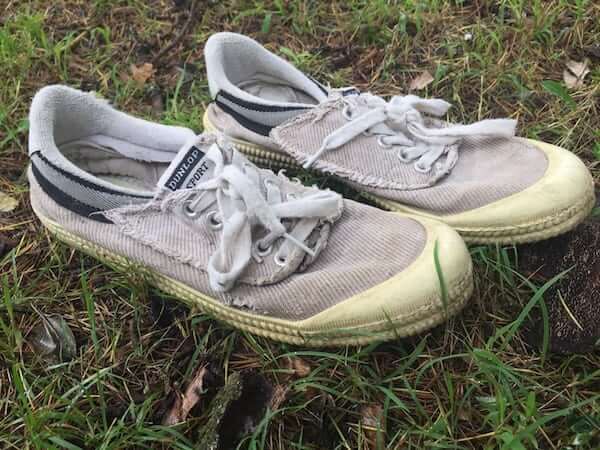
Cross Trainers – You can wear em walking, you can wear em milking a cow… matter of fact… I’m wearin’ em now. Price: $130-$250 AUD
The name says it all. They’re the shoe for doing a good cross section of sports and activities. In that way, they’re a good allrounder. There’s a good range of different brands and styles which can suit different kind of feet (narrow, wide, wonky rolling in or out feet, skinny heels), but on the downside, the soles tend to be suited to formed pathways and flat surfaces and can wear out on rough trails quickly. I wore these bushwalking for a few seasons when I was penniless and could only afford one pair of shoes to do a number of things, but then they looked pretty grubby when it came to playing a game of tennis or tackling the gym.
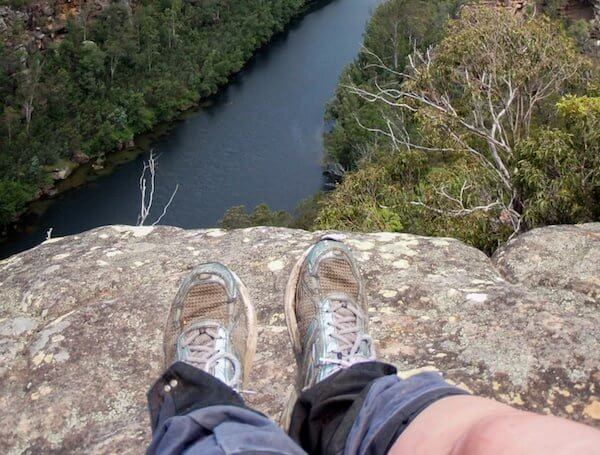
Hiking Shoes – All the good bits about a hiking boot… without the weight or ankle protection! Price: $110 – $220 AUD
Shoes that are made for a whole range of different ground surfaces (sharp rocks, gravel, boulders, tree roots, loose leaf litter, water crossings, etc) have a sole that is tougher, rougher and much more hard wearing than the two options above. The sole is also more rigid, providing greater support for the foot and associated joints overall. Other benefits are that they’re generally lighter than their booty cousins and the non-waterproof ones, drain and dry pretty well after walking through creeks or water crossings. These are what I now wear all the time, however it’s important to know that I have built up really good ankle strength through walking on uneven surfaces for many years.
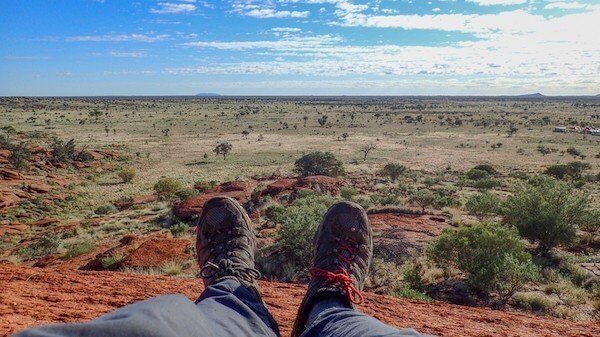
Trail Runners – What happens when a hiking shoe and a cross trainer make babies. Price: $90 – $200 AUD.
Again, these are good for those with good ankle strength and stability, whilst offering a slightly more flexi sole than a hiking shoe to aid in running technique, whilst still offering good grip on broken and uneven terrain. And as trail runners don’t tend to stop for long, they also drain well when crossing water hazards so they can keep on… keeping on.
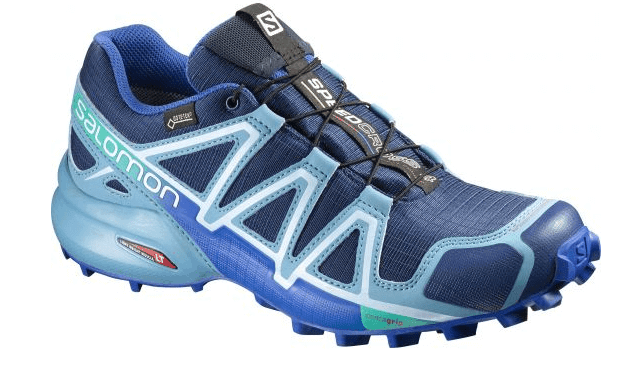
Hiking Boots – What we all ‘thought’ was the only option for bushwalking, but ain’t. Price: $150-$400 AUD
Originally only available in heavy leather and thankfully now available in both leather and synthetic uppers, these are the grandparents of all other hiking footwear. (Unless you count the amazing Dot Butler, “Australia’s Barefoot Bushwalker”). Known for their high level of ankle and foot support, they sport a rigid sole that easily conquers rough and uneven terrain, but conversely means they don’t ‘hug’ slippery rocks or boulders so easily. Available in both mid-rise and high-rise depending on your particular needs and waterproof or not.
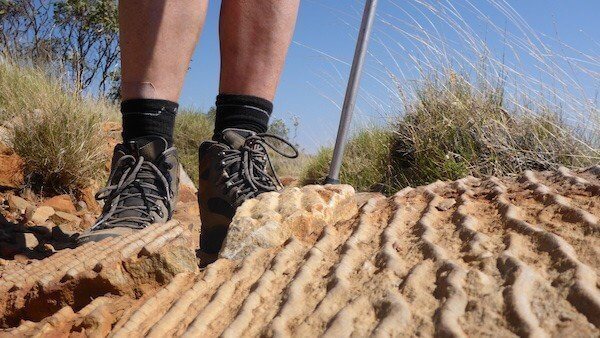
5 questions to help you choose the best hiking shoe:
1. What type of ground surface will you be walking on?
- Man-made: Concrete, bitumen, gravel (no uneven surfaces)
- Well formed single track or firetrails (occasionally uneven surface with tree roots and awkward rocks)
- Rough single track (regularly uneven surfaces with hazards)
- Boulder hopping and scrambling (wet or dry)
- Off track (anything goes!)
2. How good are your ankles? Do you twist or sprain them regularly? Are they weakened from past injury or other reason? Can you ‘right’ yourself if you feel yourself going over or rolling them?
3. Do you do regular water crossings (creeks, rivers, streams)
4. What type of backpack weight will you be carrying on average?
5. How long/what’s the duration of the walks you’ll do?
What about waterproof hiking shoes and boots?
It sounds so good doesn’t it? Waterproof or Goretex lined shoes or boots. But as one of the causes of blisters and foot problems (eg. trench foot) can be feet left wet inside shoes over an extended period time, it’s really important to think carefully about this one.
From experience, I can tell you that the saying, “waterproof boots can easily become waterproof buckets,” is absolutely true. Once water gets down inside your waterproof boots or shoes, the only way to get it out is to either a) take them off or b) lie down and raise your feet above your head… thereby pouring the water from your stinky feet over your face. This can happen not only when crossing a creek that the depth is over the height of the shoe, but also in heavy rain or sudden downpours. I’m not really a fan of removing shoes to cross a creek (unless you replace them with something like Crocs or sandals) as a cut on the foot in a wilderness area can be worse than a bad blister. It also limits your overall stability in the water crossing. So when would waterproof boots be a good idea? They’re great for areas where you might have snow, under snow-shoes, in very cold areas or when you don’t do many water crossings. But make sure that if you go that way, that they’re also breathable so your feet don’t sweat.
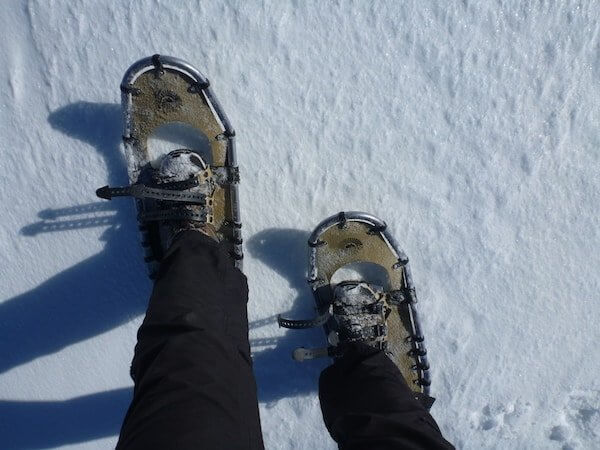
A word about weight and materials
Do you know that feeling, at the end of a hard day walking around the city, when your feet feel heavy and tired? Well, imagine that feeling when you’re carrying an extra 450-700 grams on the end of each leg (do the maths).. Now imagine you’re climbing up a big hill at the end of a day of bushwalking… with a pack. Us bushwalkers talk a lot about different ways of reducing the weight in our packs, but it’s also good to think about the weight of our shoes. Do your research online with manufacturers and find out the weight of each shoe and if they don’t publish it (ie. Hi-Tec), ask them to!

A word about breaking in
The bane of many a new shoe wearers lives. Argh. The absolutely most important thing is to not buy new walking shoes one day and then go out for a big trip with them the next. Even though some new shoes are being marketed as “no break-in required”, you still need to put the work in yourself, otherwise risk major unhappiness. Checkout my post on blisters and the associated photos if you’ve got any question about how brutal blisters can be. There are various techniques online that show how to break in shoes. Some suggest wetting them completely and then walking in them until they’re dry or using various substances to try and soften them up. However, nothing works better than putting in the yards:
- Make sure they fit you right in the first place (support local businesses by buying from a bricks and mortar shop where they’ll fit you properly)
- Make sure you’ve made the right choice in type of shoes. A good local retailer should ask you lots of questions (like those above). If they don’t… shop elsewhere.
- Wear the same socks that you plan on wearing with them normally.
- Wear your orthotics or other support that you may use – of course you tried them on with these too, right?
- Wear them around the house – not just once
- Wear them around the block – not just once
- Wear them around the office (yep, I once worked in a fancy, schmancy city office and when I wasn’t meeting clients, I had my new walking shoes on!) – every day for a couple of weeks
A word about toe parties…
https://lotsafreshair.com/2013/05/27/how-to-throw-a-toe-party/
So is there a perfect walking shoe for everyone? I’m not sure. As with much in life, there’s bound to be a compromise or two, here and there.
For me, because I have strong ankles, walk mostly on off-track terrain and often through creeks and rivers, I’ve found my happy place with a low-rise hiking shoe. It isn’t waterproof, drains water well, has a fairly rigid sole for rough terrain, but after a few wears, starts to get some flexibility that helps it grip onto boulders and rock scrambles.
But if you’re just starting out, have weaker ankles and will be sticking to single track areas with some rough surfaces, perhaps a mid or high rise, lightweight walking boot will suit you better. In the end, only you can make that decision.
